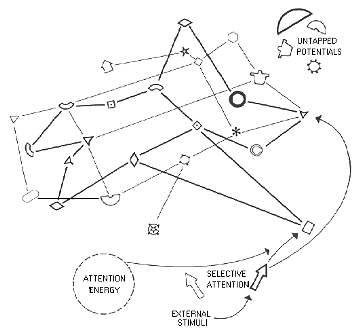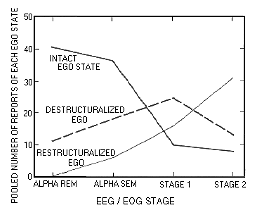



 |
| Figure 5-2. Representation of a d-SoC as a pattern of energy/awareness flow interrelating various human potentials. Lighter lines show a possible d-ASC pattern. |
 |
| Figure 5-3. Representation of a d-ASC as a reorganization of information and energy flow pattern and an altered selection of potentials. The b-SoC is shown in lighter lines. |
Our ordinary waking consciousness... is but one special type of consciousness, whilst all about it, parted from it by the filmiest of screens, there lie potential forms of consciousness entirely different. We may go through life without suspecting their existence; but apply the requisite stimulus, and at a touch they are all there in all their completeness, definite types of mentality which probably somewhere have their field of application and adaptation. No account of the universe in its totality can be final which leaves these other forms of consciousness quite disregarded. How to regard them is the question—for they are so discontinuous with ordinary consciousness.

DRCNet Library | The Drugtext Libraries